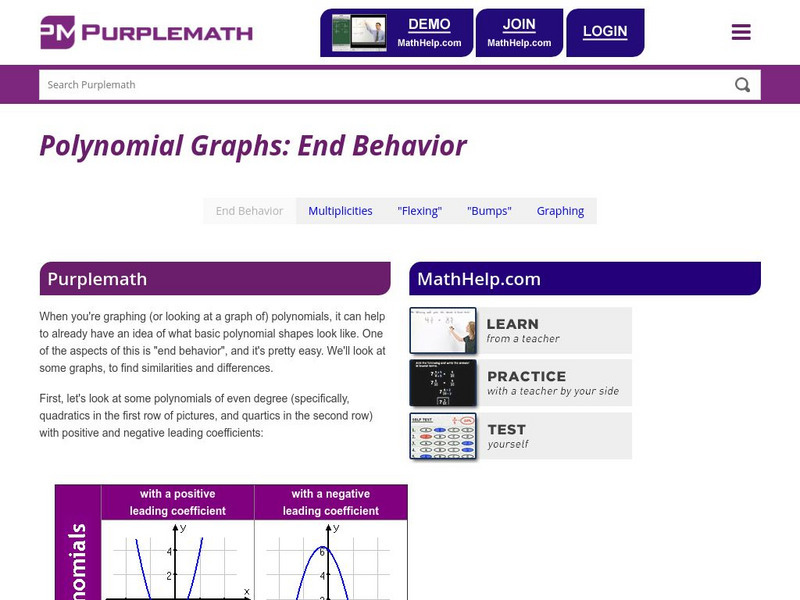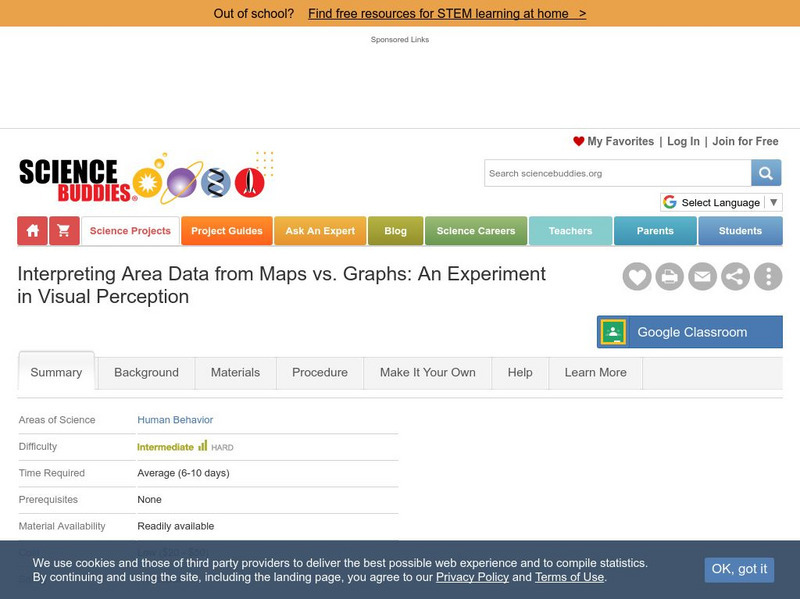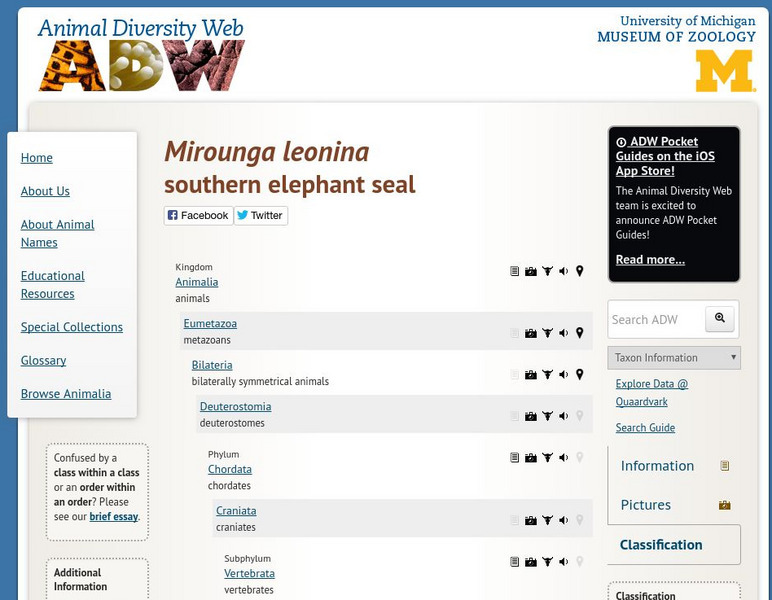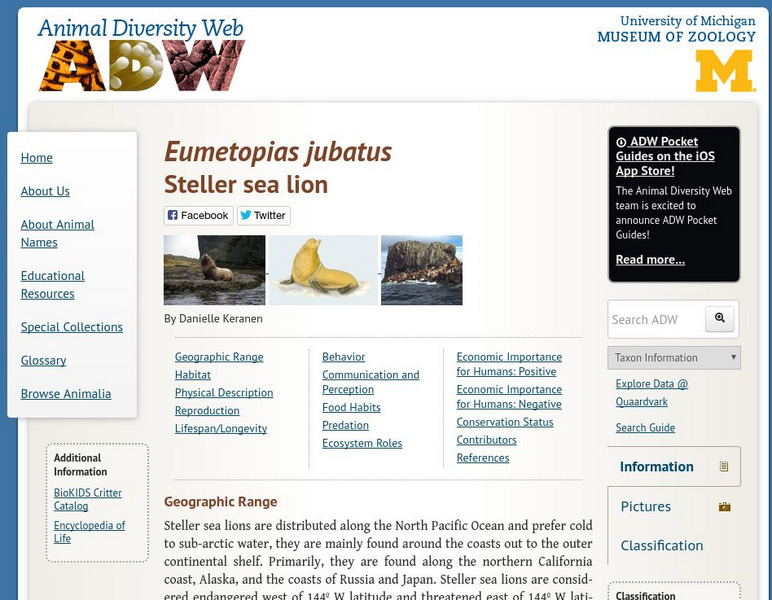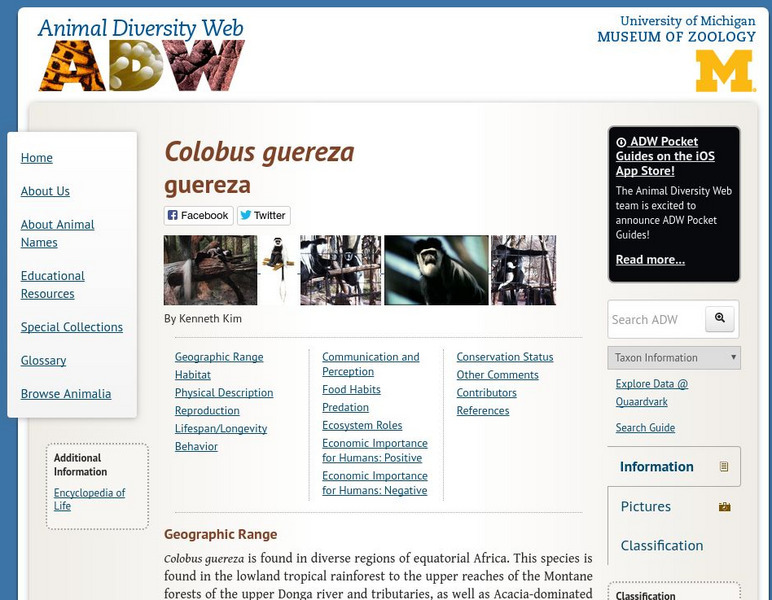Other
Using Praise to Modify Behavior
Written by a university professor who specializes in behavior disorders, and who has authored three books and over 100 articles, this site provides an explanation for one method of behavior management: positive reinforcement of good...
Purple Math
Purplemath: Polynomial Graphs: End Behavior
Explains how to recognize the end behavior of polynomials and their graphs. Points out the differences between even-degree and odd-degree polynomials, and between polynomials with negative versus positive leading terms.
PBS
Pbs Learning Media: Managing and Expressing Feelings With Little Learners
This blog focuses on the teacher wanting to to give the kids an opportunity to socialize with each other and also provide some perspective for them on what is going on. Seeing each other in our homes would let them know that we're all in...
Science Buddies
Science Buddies: Interpreting Area Data From Maps vs. Graphs
Graphical methods of data presentation are a key feature of scientific communication. This project asks the question, "What's the best way to compare the land area of states: a map or a bar graph?" You'll be measuring performance on two...
Regents of the University of Michigan
Animal Diversity Web: Southern Elephant Seal
Information on geographic range, habit, physical description, reproduction, lifespan, behavior, methods of communication, diet, predation, economic importance (positive/negative), and conservation status can be be found on this...
Regents of the University of Michigan
Animal Diversity Web: Leopard Seal
This comprehensive site covers geographic range, habitat, physical description, reproduction, behavior, diet, economic importance (positive/negative), and conservation status.
Regents of the University of Michigan
Animal Diversity Web: Mediterranean Monk Seal
This thorough site examines the geographic range, habitat, physical description, reproduction, behavior, diet, economic importance (positive/negative), and conservation status of the Mediterranean Monk Seal.
Regents of the University of Michigan
Animal Diversity Web: Harbor Seal
Geographic range, habitat, physical description, reproduction, behavior, food habits, economic importance (negative/positive), and conservation status are all part of this complete site.
Common Sense Media
Common Sense Media: Education: Build Your Ideal Community: Grades 6 8
Young scholars will consider the characteristics of positive online communities that promote responsibility and respect. Requires free membership.
Regents of the University of Michigan
Animal Diversity Web: Spotted Seal
A complete site that delves into geographic range, habitat, physical description, reproduction, lifespan, diet, predation, economic importance (positive/negative), and conservation status.
Common Sense Media
Common Sense Media: Education: What's Cyberbullying? Grades 3 5
Students discuss positive and negative aspects of interacting with others online. They learn the definition of cyberbullying and help the teacher fill in a Venn diagram that compares in-person bullying with cyberbullying. They then read...
Regents of the University of Michigan
Animal Diversity Web: Steller Sea Lion
Comprehensive reference material on Steller's sea lion: its appearance, habitat, diet, behavior, reproduction, positive and negative economic significance for humans, and conservation status.
Regents of the University of Michigan
Animal Diversity Web: Greater Kudu
Comprehensive reference material on the greater kudu, an African mammal, with information about its appearance, habitat, diet, behavior, reproduction, and positive and negative economic importance for humans.
Consumer Financial Protection Bureau
Consumer Financial Protection Bureau: Playing a Credit and Debit Game
Students play a game to practice and explore positive credit and debit card behaviors.
Regents of the University of Michigan
Animal Diversity Web: Colobus Guereza
Detailed information about guerezas, a Columbus monkey found in Africa near the equator: geographic range and habitat, physical features, behavior, reproduction and mating, communication, andn positive and negative economic impact.
Regents of the University of Michigan
Animal Diversity Web: Spotted Hyena
Detailed information about the spotted hyena: geographic range and habitat, physical features, mating and other behaviors, lifespan, and positive and negative economic impact on humans.
Regents of the University of Michigan
Animal Diversity Web: Hippopotamus
Detailed information about the hippopotamus, including geographic range and habitat, physical features, behavior, lifespan, and the positive and negative economic impact they have on humans.
Regents of the University of Michigan
Animal Diversity Web: Canadian Lynx
Detailed information about the Canadian lynx, including geographic range and habitat, physical features, behavior, lifespan, and the positive and negative economic impact they have on humans.
Regents of the University of Michigan
Animal Diversity Web: Bobcat
Detailed information about the bobcat, including geographic range and habitat, physical features, behavior, lifespan, and positive and negative economic impact on humans.
Regents of the University of Michigan
Animal Diversity Web: Cougar
Detailed information about the cougar, including geographic range and habitat, physical features, behavior, lifespan, and the positive and negative economic impact they have on humans.
Other popular searches
- Positive Behavior Lessons
- Positive Behavior Bathroom
- Positive Behavior Supports
- Positive Behavior Plans
- Positive Behavior Motivation
- Positive Behavior Drama
- Positive Behavior in School
- Positive Behavior Products
- T Chart Behavioral Positive

